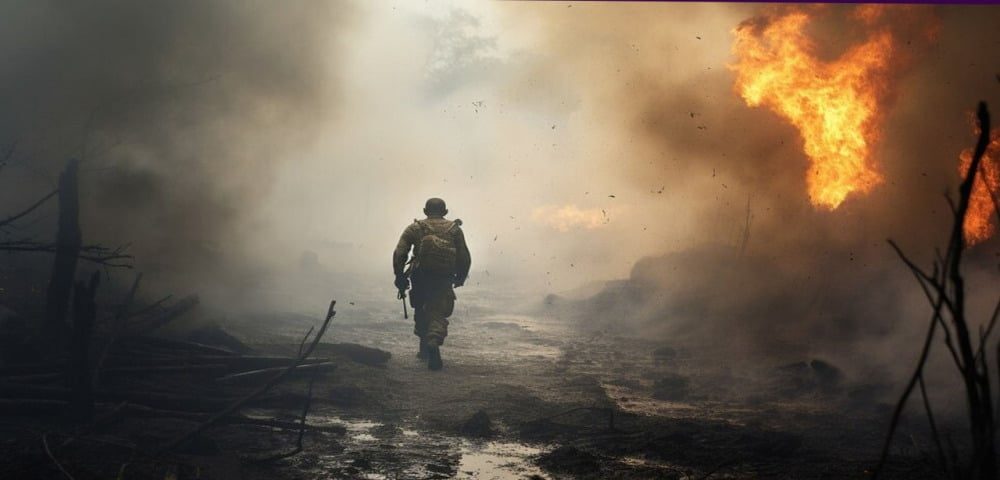In the India-Pakistan War, targets such as refineries, airports, Air Force Bids and fuel depots were important from strategic and economic perspectives. The attacks on Karachi and the stuck refinery in 1971 caused serious damage to Pakistan’s military and economic capabilities, while attacks such as Balakot were psychological and strategic implications.
The military structures of the two countries targeted the enemy’s important infrastructure in wars between India and Pakistan. This includes targets such as refineries, airports, airbus, tall buildings and fuel depots.
Importance of major goals
Some objectives during the war are important from the strategic and economic point of view. Their destruction weakens the enemy’s military capacity, supply chain and morale. The following goals were important in the India-Pakistan war:
Refineries: Refineries are a major source of fuel. Which is essential for military vehicles, planes and ships. Their destruction limits the enemy’s military mobility. In the 1971 war, the Indian Air Force attacked the stuck refinery with four Hunter aircraft of number 20 squadron on 6 December. The attack caused large -scale fire and smoke, which helped in guidance to upcoming attacks.
Effect: This attack affected Pakistan’s weapons supply and its military operations were interrupted.
Air Force base: Air Force base is important for the operation of the Air Force. Their destruction weakens the air power of the enemy. Prevents air attacks.
1965 War: The Indian Air Force attacked Sargodha Airbase, the most important and well protected base of the Pakistani Air Force. It was attended by many Canberra bombers, Mr. and Hunter aircraft.
1971 War: The Indian Air Force attacked Tejgaon and Kurmitola airbase. On 5 December, MiG-21 dropped bombs of 500 and 1000 pounds on this runway, disrupting the operations of 19-Seber jet aircraft of the Pakistani Air Force.
Scardu Airbase in 1971 : The runway of Scardu Airbase in Pakistan -occupied Kashmir was targeted by the Indian Air Force, it was taken care that only the runways were targeted, so that other facilities would not be damaged.
These attacks limited the aerial capabilities of PAF, especially in East Pakistan, where air control was acquired within two days.
High buildings: High buildings in urban areas may be command centers, communication centers or symbolic goals. However, examples of direct targets in the Indo-Pakistan war are limited, as the two countries were trying to escape the civic casualties.
There is no clear information about targeting multi-storey buildings in historical wars, but the Indian Air Force targeted Jaish-e-Mohammed’s training camp in the 2019 Balakot air strike, which was a building. However, satellite paintings suggest that there was no major damage.
Fuel depot: Fuel depot for military operations. Store fuel. Their destruction affects military activities badly, as aircraft, tanks and ships may fall on the ground due to fuel deficiency.
1971 war : Indian Air Force captured Chittagong and Narayanganj
Attacked the fuel depot. On December 4, Hunter aircraft in number 14 squadron targeted the Padma oil depot at Chittagong and set fire to oil tanks.
Karachi attack: Indian Air Force attacked on 4 December 1971
Canberra bombers attacked the Mauripur airbase and carya oil storage tanks. The Indian Navy also destroyed the Kari oil tank under Operation Trident, causing a fire in Karachi for a week.
These attacks affected 75% of Pakistan’s oil supply, which limited its Navy and Air Force activities.
Targeting strategy in India-Pakistan war
India and Pakistan preferred strategic and economic objectives in their military strategies. The selection of goals in these wars was based on the following factors…
Weakening military capacity: The objective of attacks on airbase and runway (such as Sargodha, Tejgaon) was to destroy the air power of the enemy. In 1971, the Indian Air Force defeated the Pakistani Air Force in East Pakistan within 48 hours. In 1965, the Indian Air Force lashed out 3937 flights, most of which were to destroy Pakistani Air Force bases and supply lines.
Economic damage: refineries and fuel depots
Goals such as Aataka (Kari) were chosen to weaken the enemy’s economy. The Karachi port, which was the trade center of Pakistan, was badly affected by the Indian Air Force and Navy attacks in 1971.
In 1971, the Indian Air Force carefully targeted oil tanks in Bangladesh to protect Bangladesh’s property from future damage.
Psychological effects: Major goals such as refineries and ports were attacked to boost the enemy’s morale and create fear in the public. An example of this is a fire in the oil tank in Karachi.
Target in specific wars
1965 War: Sargodha airbase, railway station and a group of armored vehicles.
strategy : 3937 flying including Indian Air Force
It also includes an attack on Sargodha. The Pakistani Air Force also attacked the Indian Air Force bases (Pathankot, Adampur, Halwara).
Effect: Both sides claimed victory, but the air war stopped.
1971 War: Karachi port, stuck refinery Tejgaon and Kurmitola Airbase, Chittagong and Narayanganj fuel depot.
strategy: The Indian Air Force took 4,000 flights in the west and 1,978 flights in the east. PAF was soon neutralized in East Pakistan, while refineries and oil depots were targeted in the west.
2019 Balakot Attack: Jaish-e-Mohammed Training Camp (possibly building).
strategy: Pre-in Its effect was limited, but this showed India’s desire to take revenge.
Key facts and figures
1965 War: IAF lashed out at 3,937 flights, PAF fly 2,364 flights. Both gave priority to the airbase.
1971 War: Oil tanks in Karachi caught fire for seven days, affecting Pakistan’s 75% oil supply.
East Pakistan in 1971: The Indian Air Force gained control in 48 hours and inactivated 19 -Seber jets of the Pakistani Air Force.
2019 Balakot: Satellite photographs revealed that terrorists had suffered a major loss. This attack gave a strategic message.
